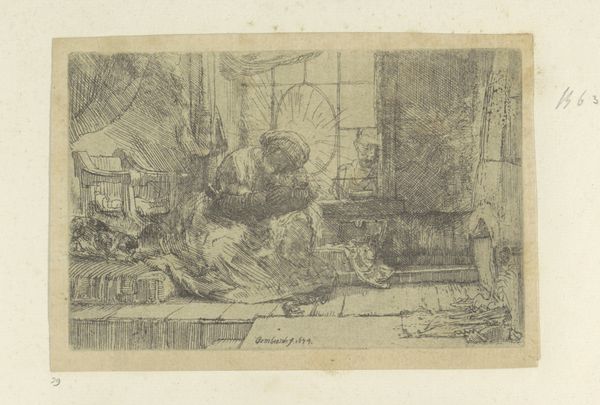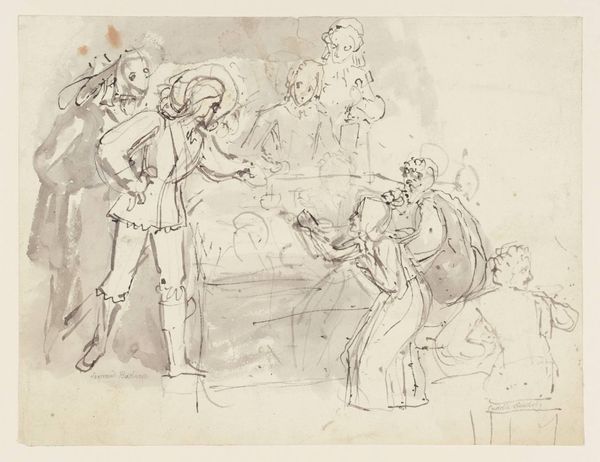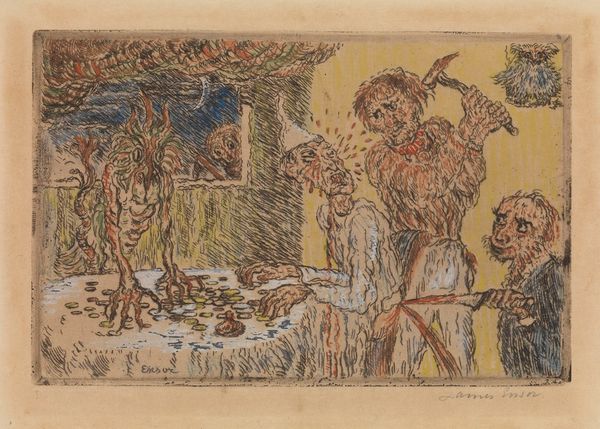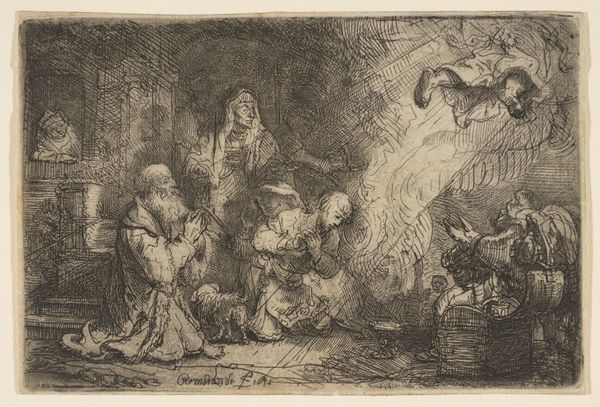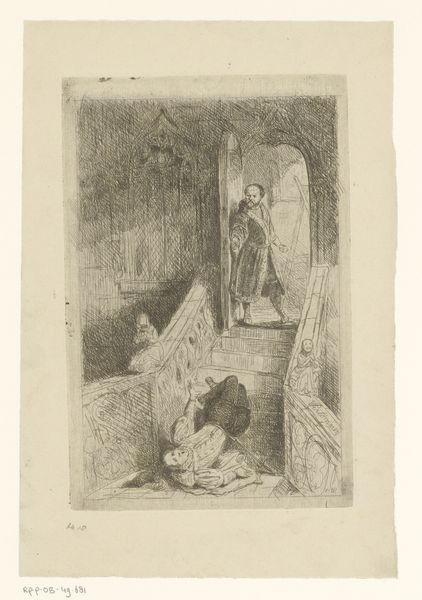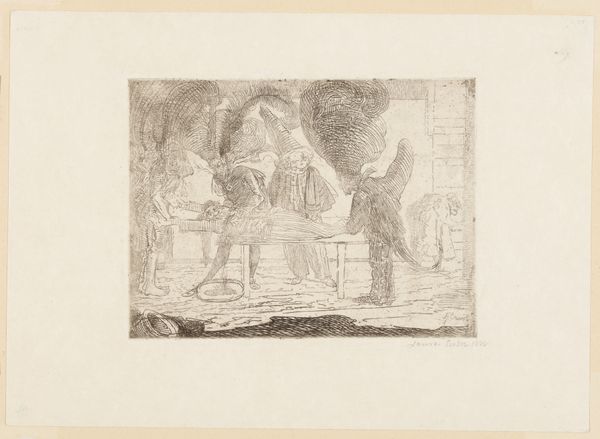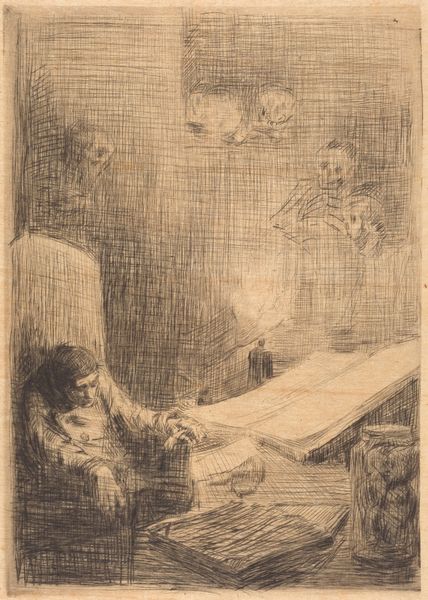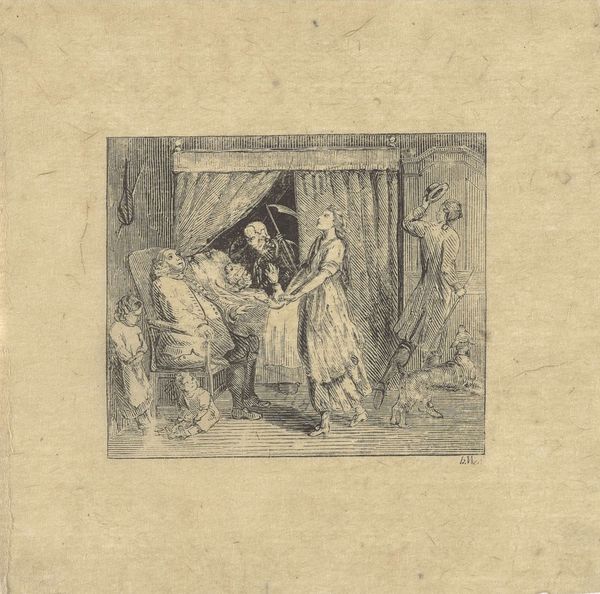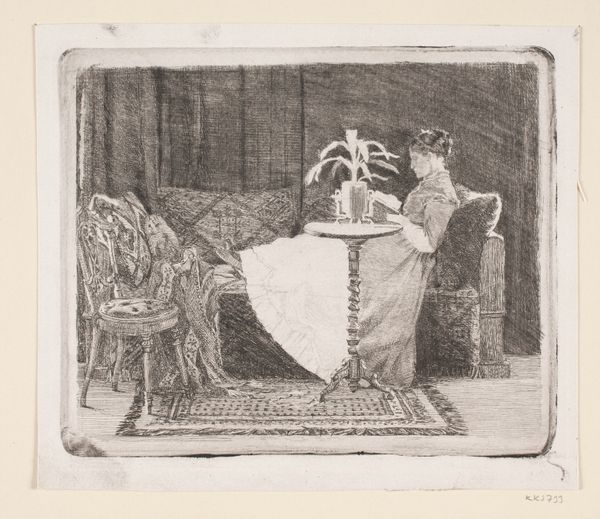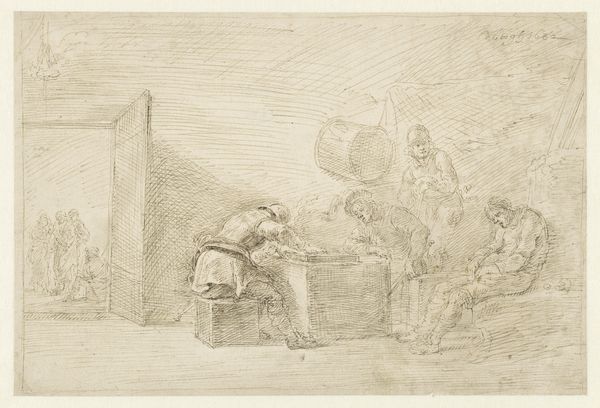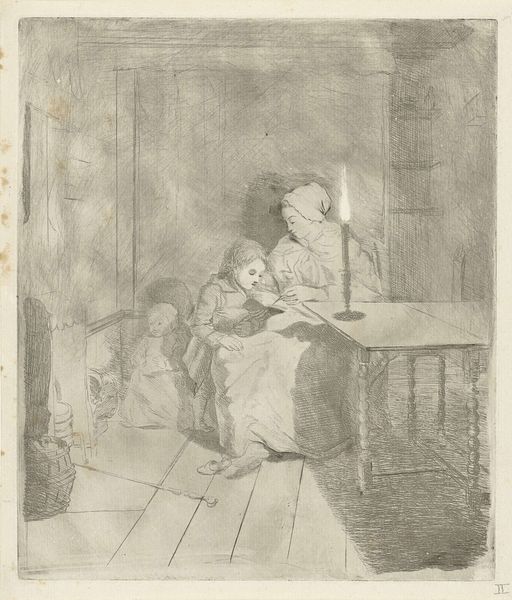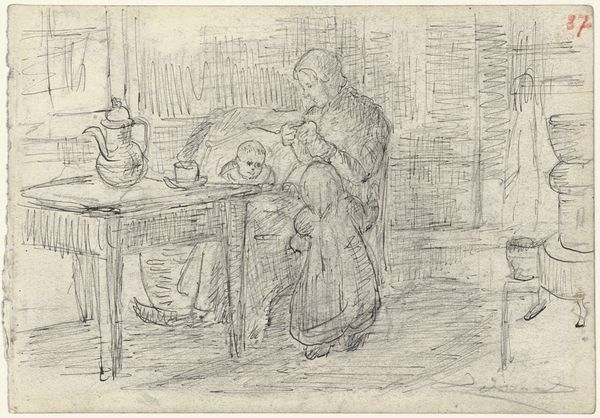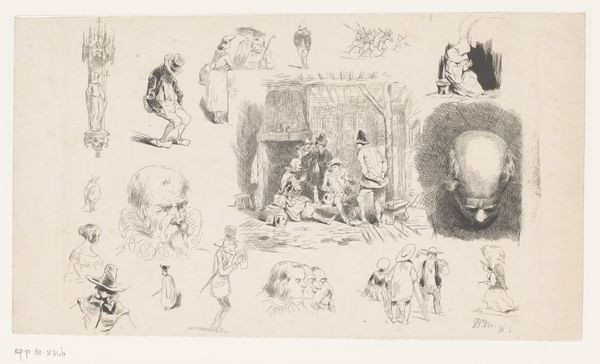
print, etching
#
narrative-art
# print
#
etching
#
figuration
#
symbolism
#
genre-painting
Copyright: Public Domain: Artvee
James Ensor made this color etching, titled “The Murder,” in Belgium in 1888. It’s easy to see how the cultural and political milieu of the late 19th century informed this work. Here we have a grotesque and shocking image, rendered with acidic colors and nightmarish figures who hover over a prone body like malevolent clowns performing a diabolical autopsy. The artist's homeland was facing profound social and political tensions at the time, as industrialization brought wealth to some, and poverty to many. Ensor’s artwork, in its depiction of a macabre parody of institutional authority, can be seen as a broader commentary on the social structures of his era. The scene is not just a representation of physical violence, but a brutal critique of the society that perpetuates it. To fully grasp Ensor’s work, you should consider his artistic influences, the political climate of Belgium at the time, and the role of art institutions in shaping public perception. Through careful historical investigation, we can see Ensor's art as both a product and a critique of its time.
Comments
No comments
Be the first to comment and join the conversation on the ultimate creative platform.
